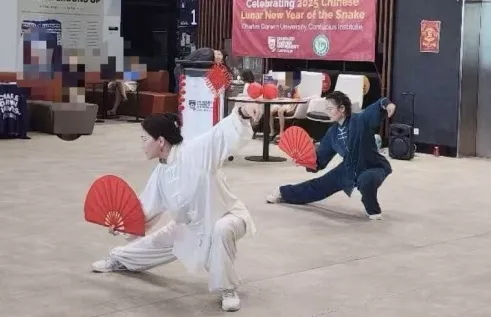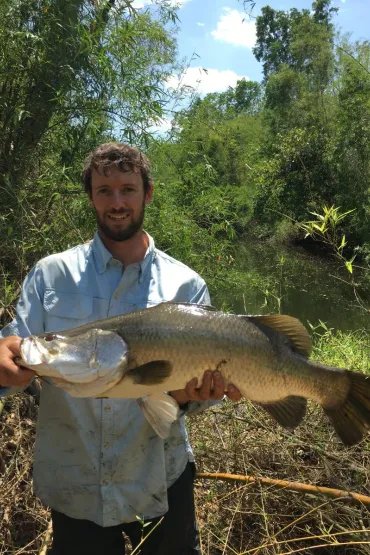RIEL seminar series
Fish and floodplains: drivers of barramundi migration in the Top End
| Presenter | Dr Brien Roberts | |
|---|---|---|
| Date/Time |
to
|
|
| Contact person | E: riel.outreach@cdu.edu.au | |
| Location | CDU Casuarina Campus Yellow 1.1.39 and online | |
| Open to | Public | |
Migration is a fundamental aspect of the lifecycle of many animals and enables individuals to exploit habitats and resources that are geographically separated from breeding sites. Movement patterns are often highly variable among individuals, which may have profound implications for the productivity and resilience of populations and the ecosystem services (e.g., fisheries) they provide. Diadromous fishes, which undergo migrations between marine and freshwater habitats, are exemplars of such behavioural flexibility, which makes them ideal candidates to investigate the mechanisms that underpin migration. My PhD research uses barramundi as a model species to explore the causes and consequences of variable migratory behaviour within populations. Overall, my findings underscore the importance of productive freshwater habitats for barramundi populations and highlight the complexity of trade-offs between life history characteristics and individual fitness. I argue that hydrological variability, which characterises northern Australian rivers, plays a key role in enhancing the productivity of important commercial, recreational and subsistence fisheries. My research outlines the threats to tropical riverine and coastal fisheries imposed by increasing demand for freshwater resources, emphasising the need to incorporate the preservation of life history diversity into the goals of sustainable development.
Brien Roberts is a recent PhD graduate with RIEL at Charles Darwin University. He has a keen and lifelong interest in aquatic biology, and will be in part presenting his thesis, titled ‘Drivers of catadromous migration in barramundi in the wet/dry tropics of northern Australia’. He is currently working as an aquaculture scientist with NT Fisheries.
Related Events

Chinese kung fu classes for kids
Join our kung fu classes specialised for children. It’s more than just exercise—it’s a journey to a healthier, brighter, and more focused future for every child! The classes run every Monday at 5.30 pm, from 26 January - 30 March.
Read more about Chinese kung fu classes for kids
Tai Chi Kung Fu Fan
Join our Tai Chi Kung Fu Fan classes to learn a unique style of Tai Chi combined with other martial arts and dance movements! The classes run every Monday at 5.30 pm, from 26 January - 30 March.
Read more about Tai Chi Kung Fu Fan
Chinese calligraphy for beginners
The CDU Confucius Institute is now offering Chinese calligraphy for beginners, a new course on the CDU Casuarina campus. The workshops will run every Tuesday, from 5 pm - 6 pm, starting 27 January to 31 March.
Read more about Chinese calligraphy for beginners
